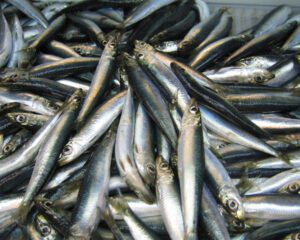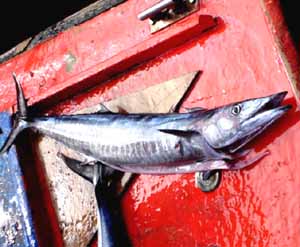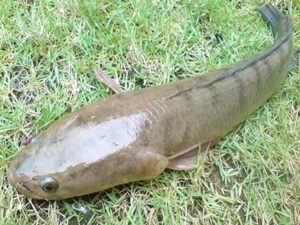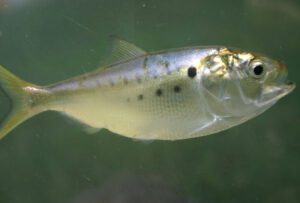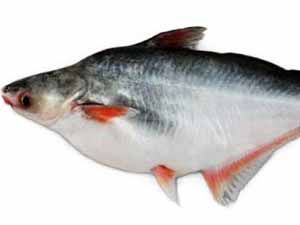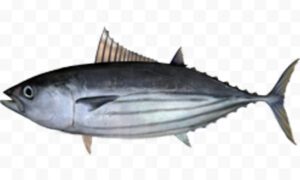The Atlantic cod fish is a benthopelagic fish of the family Gadidae. It is also called Gadus morhua and commercially known as cod or codling.
It is a widely consumed fish species throughout the world. It is one of the most important commercial fish species in Northern Europe and North America’s eastern coast.
Large traditional fisheries dates back many centuries and have been an important basis for many coastal communities, and important merchandise.
In the western Atlantic Ocean, the Atlantic cod fish is distributed north of Cape Hatteras, North Carolina and around both coasts of Greenland and the Labrador Sea.
And in the eastern Atlantic, it is found from the Bay of Biscay north to the Arctic Ocean, including the Baltic Sea, Sea of the Hebrides, the North Sea, Barents Sea and areas around Iceland.
The Atlantic cod fish is divided in several more or less separate stocks with different population size and harvest regime. And the largest fishery is on the Northeast Arctic and Icelandic cod stocks.
Today the fishery is very low compared to historical levels, and the stocks in North America were heavily reduced during the 1980s. In the year of 2008, total worldwide catch was around 765,000 tons (of which about 73 percent was taken by Iceland, Norway and Russian Federation).
Today, the cod fish is highly popular as food. It is sold as fresh fillets, salted or as stockfish. But the cod from aquaculture are relatively popular in the market than the wild caught cod, and often obtain much higher price.
Currently the Atlantic cod fish is labelled vulnerable on the IUCN Red List of Threatened Species. However, read some more information about this fish below.
Atlantic Cod Fish Characteristics
The Atlantic cod fish can grow very large. Their common coloring is brown or green, with spots on the dorsal side, shading to silver ventrally.
There is a stripe along the lateral line which is clearly visible, and used to detect vibrations. Their head is relatively narrow (interorbital space 15-22 percent of head length).
Average body length of the Atlantic cod fish is between 61 and 120 cm, with a maximum recorded length of 180 cm.
The average body weight is around 40 kg, with a maximum recorded weight of 96 kg.
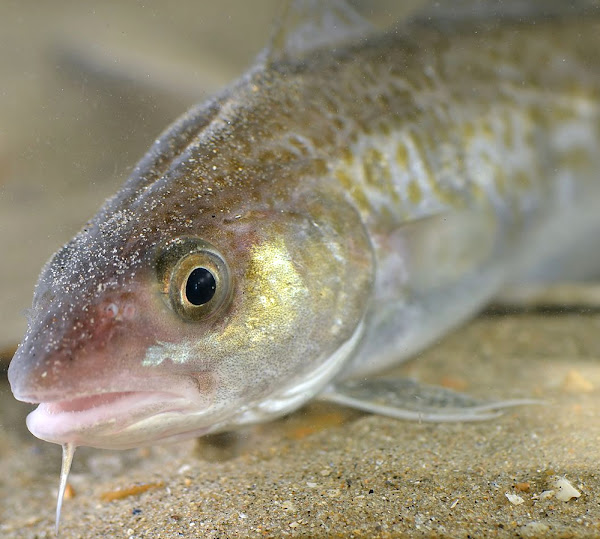
Generally there are no size or weight differences between males and females. Both males and females are almost same in size and weight. Photo and info from FAO and Wikipedia.
Diet
The small Atlantic cod fish are mainly feed on crustaceans. But the large fish are mainly feed on other fish.
Their main food source is decapods in some regions, with fish as a complementary food item in their diet.
Breeding
The mature fish from squirting aggregations from late winter to spring. The females release their eggs in batches, and the males compete to fertilize them.
The fertilized eggs drift with ocean currents and develop into larvae. Their average maturation age can vary from ages 2-4 years in the west Atlantic, but as late as 8 years in the northeast Arctic.
Depending on the age of the females, total number of the eggs can vary. But a female with an average body weight of 5 kg can lay up to 2.5 million eggs.
Uses
The Atlantic cod fish is mainly used for food. It is very popular as food throughout the world.
Special Notes
The Atlantic cod fish are long lived fish species. They can live for up to 25 years, with an average lifespan of around 13 years. The farming of this fish has a long history.
The Norwegian sea-captain G.M. Dannevig started experiments with the artificial rearing of this fish in the 1880s. His aim was to increase coastal cod stocks by hatching and releasing yolk sac larvae of cod.
Similar experiments were also performed in Canada and the United States.
And billions of cod larvae were released in these countries during the period between 1884 and 1971. Those experiments were the basis for the development of modern cod fish farming.
Today the Atlantic cod fish is a very popular but threatened fish species. It is consumed throughout the world. However, review full breed profile of the Atlantic cod fish in the table below.
| Name | Atlantic Cod |
| Kingdom | Animalia |
| Phylum | Chordata |
| Class | Actinopterygii |
| Order | Gadiformes |
| Family | Gadidae |
| Genus | Gadus |
| Species | G. morhua |
| Binomial Name | Gadus morhua |
| Other Names | Also known as cod or codling |
| Breed Purpose | Mainly food |
| Special Notes | Economically important fish species, popular food fish throughout the world, long-lived fish species with an average lifespan of around 13 years, can be raised in farms commercially, today used mainly for food |
| Weight | Around 40 kg, with a maximum recorded weight of 96 kg |
| Breeding Method | Natural |
| Climate Tolerance | Native climates |
| Body Color | Brown or green with spots on the dorsal side, shading to silver ventrally |
| Rarity | Common |
| Availability | Worldwide |

